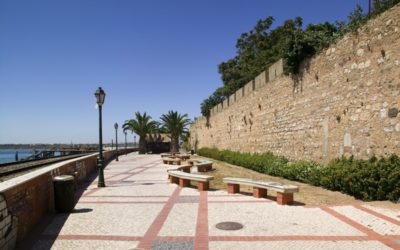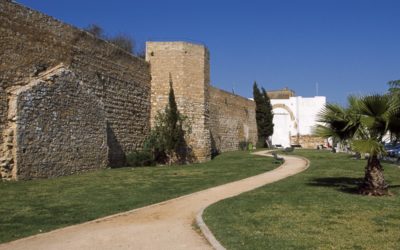The old part of Faro, known as the Vila Adentro, is surrounded by a wall that is oval in shape and dates back to the Roman period about two thousand years ago.
The wall underwent major alterations and enlargement between the 9th and the 11th centuries during the period of Arab occupation, and it has two “albarrã” towers dating from this period which protected the entrance to the Arco do Repouso (Arch of Rest) where, legend has it, King Afonso III rested after the city had been taken from the Moors in 1249. Also dating from the Arab period is the entrance with a gateway in the shape of a horseshoe arch which can be seen inside the Arco da Vila.
Also of interest are the two octagonal towers which were built by the Byzantines a century before the Muslim occupation of the city.
Since the early 19th century, the main entrance into the historical part of the city has been the Arco da Vila, an interesting example of neoclassical art which was designed by the Italian architect Francisco Xavier Fabri. It contains a niche with a statue of St Thomas Aquinus and it was classified as a national monument in 1910.
Despite the damage caused in the 16th century by earthquakes and attacks by English privateers, as well as the destruction caused by the great earthquake of 1755, the walls have survived until the present day and some restoration work has been carried out in recent years.
Additional Information
County: Faro
Phone: 289 897 400 (Faro Municipal Museum)
VisitAlgarve URL: https://visitalgarve.pt/en/512/muralhas-de-faro-faro-city-walls.aspx

